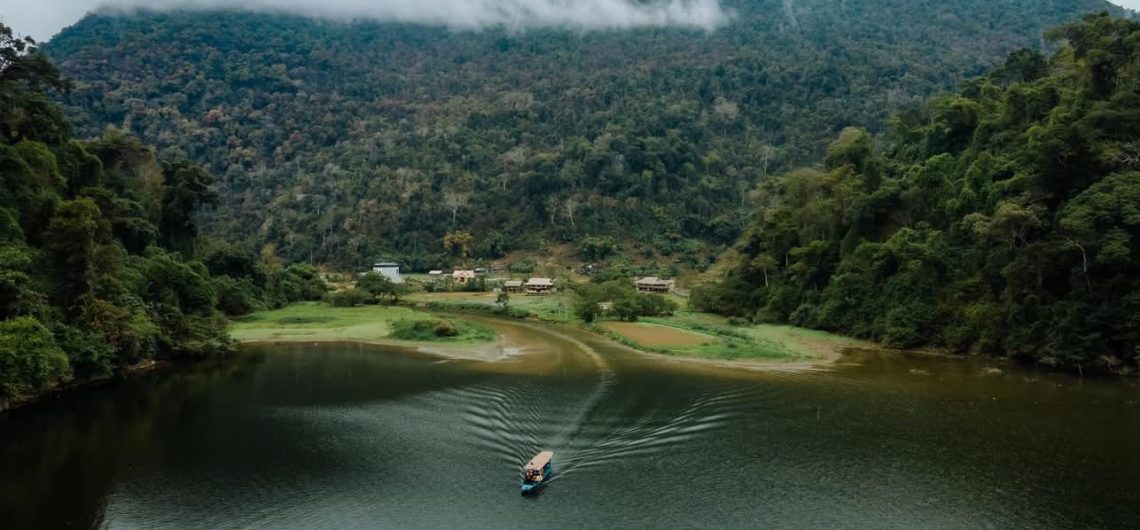Tucked away in the rugged landscapes of Bac Kan Province, Northern Vietnam, Ba Be National Park is a place where nature, culture, and adventure come together. Less commercial than other tourist hotspots, Ba Be offers travelers the rare chance to explore an untouched side of Vietnam. This isn’t a place of five-star hotels and fancy resorts. It’s where limestone mountains meet deep green forests, where local ethnic communities still live as they have for generations, and where the sound of birds and waterfalls replaces traffic and construction.
If you’re looking for authentic experiences, outdoor adventure, and cultural connections, Ba Be National Park should be on your radar. Let’s break down what makes this place special — from when to visit and who lives there to what to see and do.
Where is Ba Be National Park?

Ba Be National Park is located in Bac Kan Province, about 240 kilometers north of Hanoi, Vietnam’s capital. The park covers over 100 square kilometers of karst limestone landscapes, valleys, rivers, caves, and its centerpiece — Ba Be Lake, the largest natural freshwater lake in Vietnam.
The area is part of the Northeast region, bordering Cao Bang Province and not too far from the Chinese frontier. Despite its raw beauty, Ba Be remains relatively under-visited compared to Vietnam’s more famous destinations like Ha Long Bay or Sapa. Part of the appeal is the park’s remote setting, which has helped shield it from overdevelopment and mass tourism.
Traveling to Ba Be typically involves a five to six-hour drive from Hanoi, making it perfect for weekend getaways or as a stop on a Northern Vietnam road trip.
Best Time to Visit Ba Be National Park
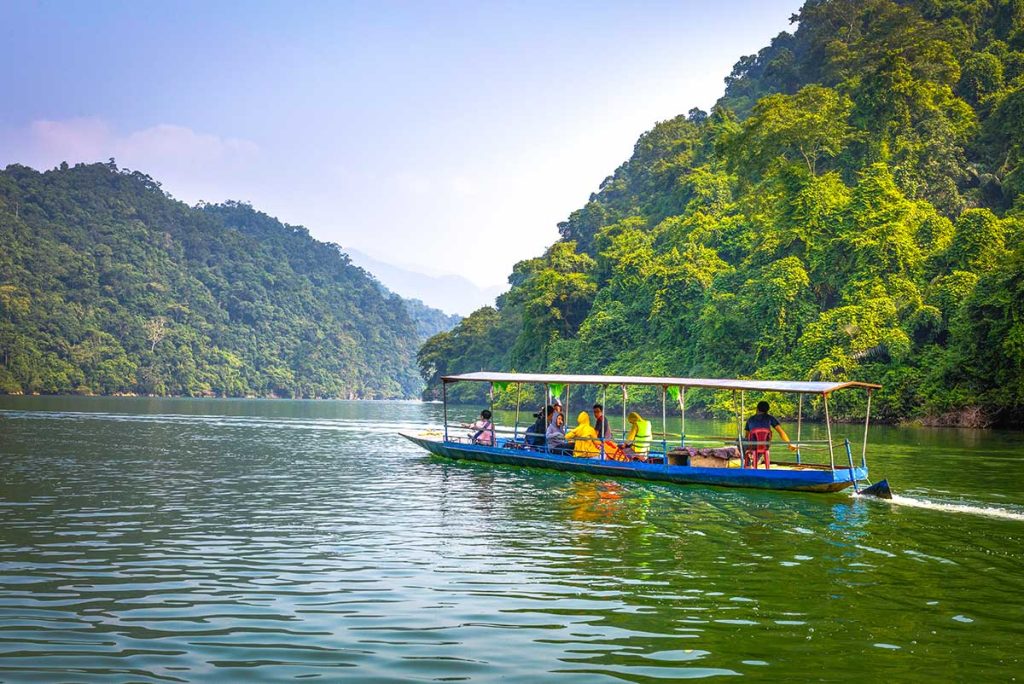
Timing your trip to Ba Be National Park can really shape your experience. The region has a tropical monsoon climate with two distinct seasons: wet and dry.
- Dry Season (October to April): This is the best time to visit if you want clear skies and easy hiking conditions. October through December offers cool weather and low humidity, making it great for trekking and boat trips on the lake. January and February can get chilly, especially in the early mornings, but the scenery is still striking with mist-covered hills and fewer tourists.
- Wet Season (May to September): Rainfall is highest from June to August, with occasional heavy downpours. On the plus side, the landscape is lush, green, and the waterfalls and rivers are full and lively. If you can handle the rain, this is the time to see Ba Be at its most vibrant, but hiking trails can get muddy and slippery.
If you want the best of both worlds — comfortable weather and rich greenery — March to May and September to October are ideal. The temperatures are moderate, nature is in full bloom, and the area isn’t packed with visitors.
The People: Ethnic Groups of Ba Be
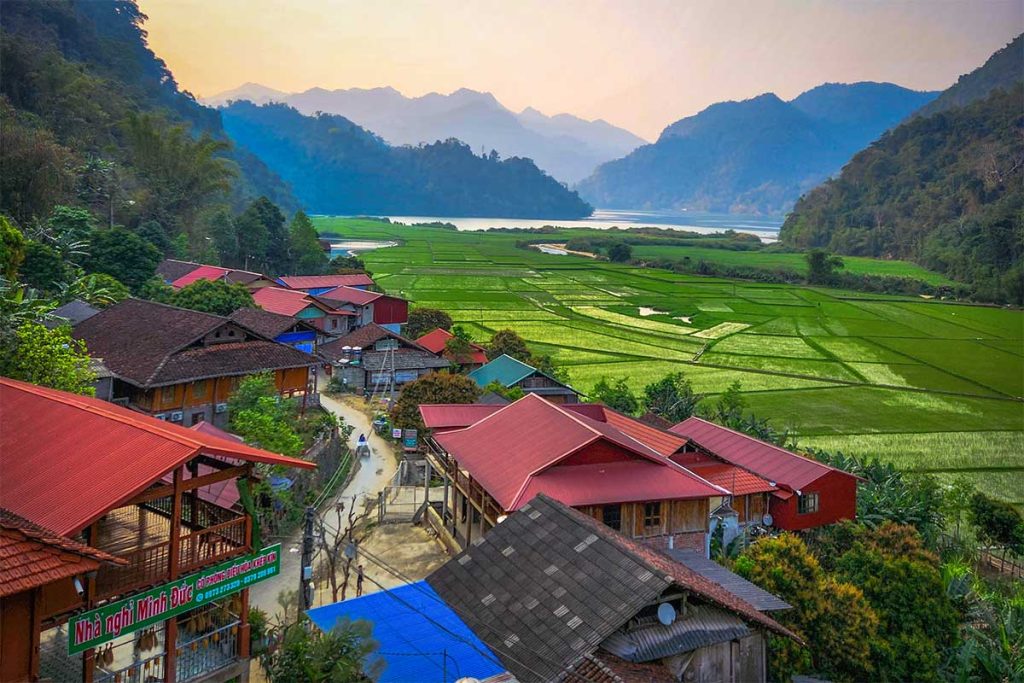
Ba Be National Park isn’t just about landscapes. It’s also home to some of Vietnam’s most distinct ethnic groups, whose cultures add depth to the experience. Roughly 13,000 people live in and around the park, spread across more than a dozen small villages.
The main ethnic groups are:
- Tay People: The Tay are the largest community in Ba Be. They are known for their stilt houses, traditional weaving, and folk songs. The Tay people were the original settlers around Ba Be Lake and remain the primary stewards of the land today. Visitors often stay in Tay homestays, where families host travelers and share home-cooked meals and local customs.
- Dao People: Recognized by their colorful, embroidered clothing and elaborate silver jewelry, the Dao are another prominent group. The Dao communities often live higher in the mountains and maintain strong traditions of herbal medicine, farming, and forest conservation.
- Hmong People: Smaller in number within Ba Be, the Hmong are often found at higher altitudes. Their distinctive indigo-dyed clothing and skills in agriculture and handicrafts make them a culturally rich part of the area’s human mosaic.
Each of these communities has its own language, rituals, and way of life, and many visitors to Ba Be say their time spent interacting with local families was the highlight of their trip.
Things to See in Ba Be National Park
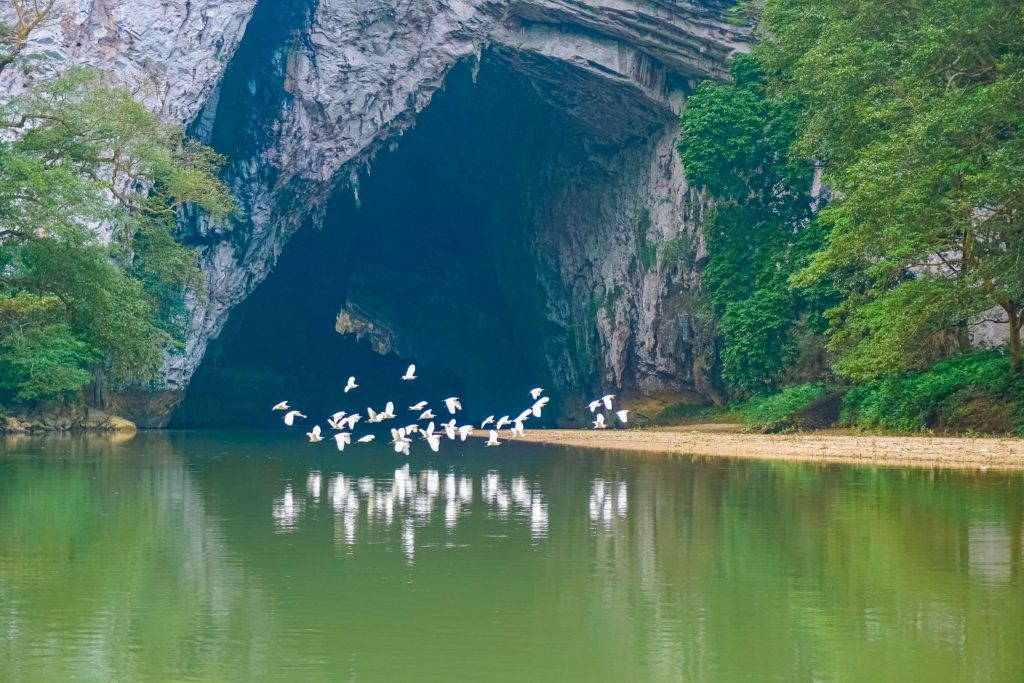
Ba Be National Park isn’t short on natural attractions. Its landscapes seem designed for exploration, from towering limestone cliffs to deep valleys and underground rivers.
- Ba Be Lake
At the heart of the park is Ba Be Lake — actually three linked lakes (Pe Lam, Pe Lu, and Pe Leng) covering about 500 hectares. Surrounded by steep limestone mountains and thick forests, the lake is as peaceful as it is scenic. A boat trip across Ba Be is usually the first item on any visitor’s itinerary, offering views of floating villages, waterfalls, and hidden caves.
- Puong Cave
Puong Cave is one of the most impressive natural features in the park. The Nang River flows directly through this 300-meter-long tunnel, cutting a path through towering limestone cliffs. The cave is home to thousands of bats and fascinating stalactites and stalagmites. A boat can take you straight into the cave, which feels like stepping into another world.
- Dau Dang Waterfall
A short boat ride from Ba Be Lake leads you to Dau Dang Waterfall — a rugged cascade system where the Nang River tumbles over large boulders. In the wet season, the waterfalls roar with power, while in the dry season, they’re calmer but still picturesque.
- Hua Ma Cave
Hua Ma Cave is a dry cave located on a hillside, accessible by a winding staircase. Inside, you’ll find dramatic limestone formations, some of which stretch several meters high. The cave’s name means “Horse Head” in Vietnamese, tied to a local legend about a ghost horse trapped in the cave.
- Pac Ngoi Village
Pac Ngoi is one of the most accessible Tay villages near the lake. Its stilt houses sit peacefully along the water, and the locals are known for their hospitality. Many travelers choose Pac Ngoi for overnight stays in traditional homestays, where you can dine on local dishes and hear folk tales directly from the community.
Things to Do in Ba Be National Park

While Ba Be isn’t packed with commercial tours, the lack of crowds gives you freedom to shape your own experience. Here’s how to make the most of your visit.
- Boat Trips
A boat trip on Ba Be Lake is a must. You can choose between small paddle boats or motorized long-tail boats, both steered by local guides. You’ll pass through stretches of open water, riverside villages, and caves like Puong Cave. Early morning or sunset cruises offer the most serene views, especially when morning mist hovers over the water.
- Trekking and Hiking
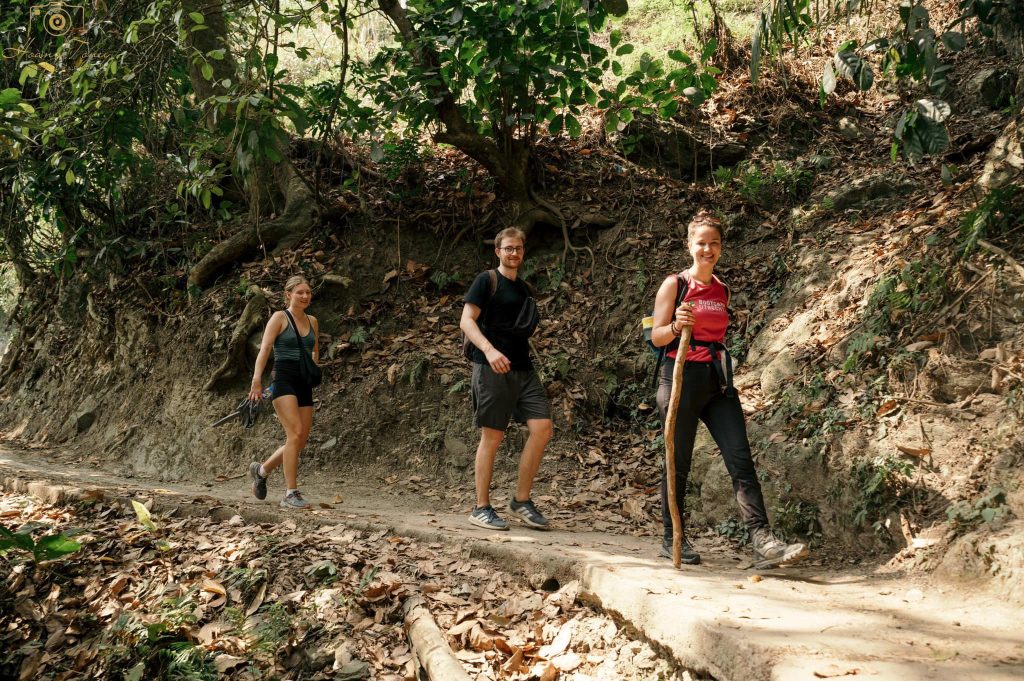
Ba Be offers hiking for all levels. Short treks connect villages like Pac Ngoi and Coc Toc, while longer, more challenging trails head into the mountains and thick forests. Multi-day treks will bring you to remote Dao and Hmong villages rarely seen by outsiders. Along the way, you’ll encounter panoramic viewpoints, farmland, and wildlife like macaques and hornbills.
- Cycling
For those who prefer two wheels, Ba Be is a great cycling destination. The roads are quiet, winding through ethnic villages, rice paddies, and forested hills. Some routes are gentle loops around the lake, while others climb steep slopes into the highlands for seasoned cyclists.
- Caving
Aside from Puong and Hua Ma, Ba Be is home to several lesser-known caves waiting to be explored. Local guides can take you to off-the-map caves, where you might spot bats, ancient stalactites, and underground streams.
- Kayaking
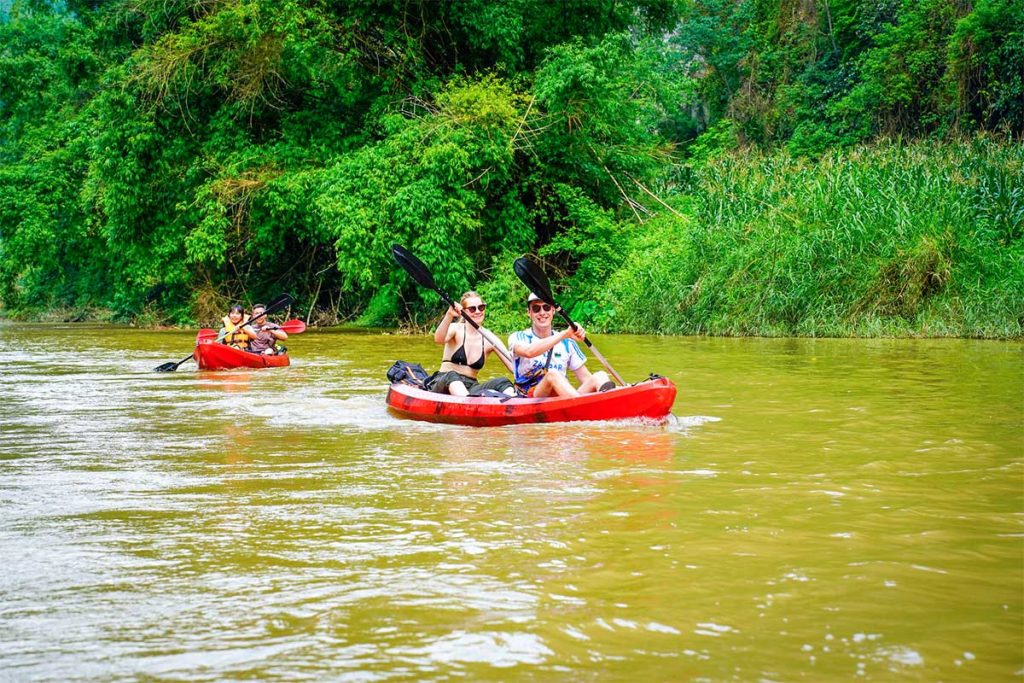
For a more personal connection with Ba Be Lake, kayaking offers an up-close experience of the water and surrounding cliffs. Kayaking is peaceful, eco-friendly, and perfect for birdwatching or photographing the limestone landscape at your own pace.
- Cultural Experiences
Many Tay, Dao, and Hmong families offer homestays, cooking classes, and handicraft workshops. Sharing meals and conversations with locals gives you insight into life in the park that no guidebook can offer. Traditional dishes include grilled fish from Ba Be Lake, sticky rice, and bamboo-tube rice (called “com lam”).
Why Ba Be National Park Stands Out
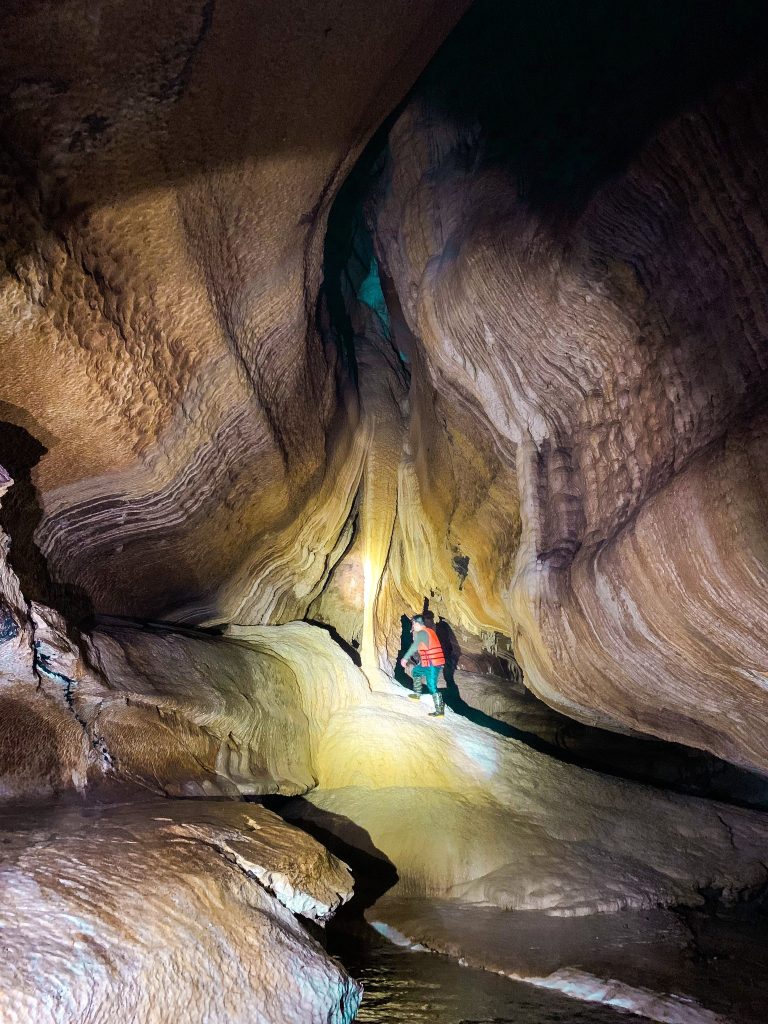 What makes Ba Be National Park stand out isn’t just the scenery, but the sense of authenticity. This isn’t a polished, over-touristed attraction. It’s a living landscape, shaped by both nature and human hands.
What makes Ba Be National Park stand out isn’t just the scenery, but the sense of authenticity. This isn’t a polished, over-touristed attraction. It’s a living landscape, shaped by both nature and human hands.
Visitors leave with memories of misty mornings on the lake, the earthy scent of wood smoke from stilt houses, and warm welcomes from people who’ve called this place home for centuries. Ba Be is where Vietnam shows its quieter, more reflective side — one that moves at its own pace, far from the noise of the big cities.
If you’re the kind of traveler who prefers genuine experiences over Instagram checklists, Ba Be National Park is worth the trip.
Final Thoughts
Ba Be National Park remains one of Northern Vietnam’s best-kept secrets. Whether you come for the peaceful lake, the karst caves, the village homestays, or the forest treks, the park offers a blend of adventure and culture that’s hard to match.
With its welcoming ethnic communities, striking limestone scenery, and laid-back vibe, Ba Be is the kind of place that leaves a lasting mark on anyone who visits. If you want to experience Vietnam beyond the usual tourist trail, pack your hiking boots, charge your camera, and head north.

